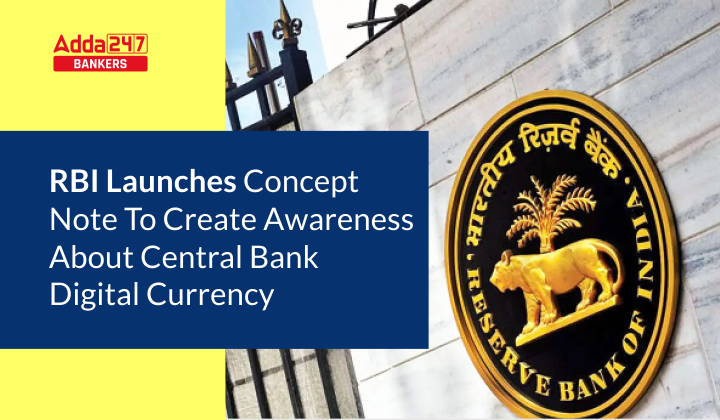Table of Contents
RBI Launches Concept Note To Create Awareness About Central Bank Digital Currency: The Reserve Bank of India (RBI) launched a “Concept Note” regarding central bank digital currency (CBDC) for India. The “Concept Note” covers important topics such as technology and design options, potential applications for the digital rupee, and issuance procedures. The Union Minister of Finance stated in Budget 2022 that the RBI will issue a CBDC during this financial year and that they would use a graded strategy to introduce the digital rupee.
What is CBDC?
CBDC is defined by the Reserve Bank as a digital legal tender issued by a central bank. It is the same as a sovereign currency and can be exchanged at par (1:1) with fiat cash. While digital money is widely used in India, such as in bank accounts that are recorded as book entries on commercial bank ledgers, a CBDC would be different from other digital money that is accessible to the general public because it would be a liability of the Reserve Bank rather than a commercial bank. A distributed ledger technology (DLT) like Blockchain will be used to maintain its records and this will make all CBDC transactions traceable.
The RBI Act will be amended to include e₹ in the definition of the term ‘bank note,’ as well as a new section covering e₹ features and appropriate exclusions.
Features of CBDC
- CBDC is a form of sovereign currency that central banks issue in accordance with their monetary policies.
- On the balance sheet of the central bank, it is shown as a liability.
- It is expected to reduce the expense of issuing money and conducting transactions.
- It is easily convertible against cash & commercial bank money.
- All individuals, businesses, and governmental organizations must recognize it as a valid form of payment, legal tender, and a safe store of value.
- It is a fungible legal tender for which holders do not need a bank account.
Benefits of CBDC
- It will help in promoting payment competitiveness, efficiency, and innovation.
- Encourage financial inclusion
- It will reduce the cost of managing physical cash
- Improve cross-border transactions.
- Protect the public’s faith in the national currency against the expansion of crypto assets.
- It will promote the cause of digitalization in order to establish a cashless economy.




 Weekly One Liners 31st March to 06th Apr...
Weekly One Liners 31st March to 06th Apr...
 05th April 2025 Current Affairs | Daily ...
05th April 2025 Current Affairs | Daily ...
 03rd April 2025 Current Affairs | Daily ...
03rd April 2025 Current Affairs | Daily ...





